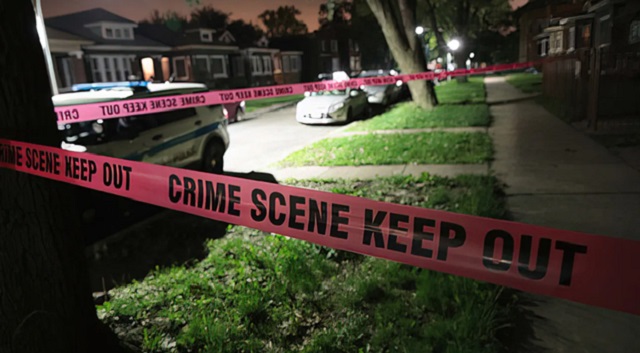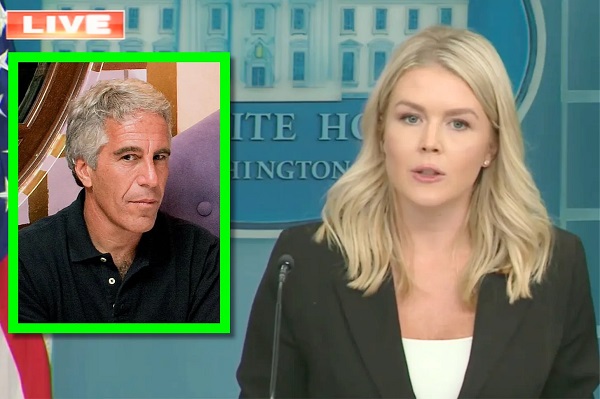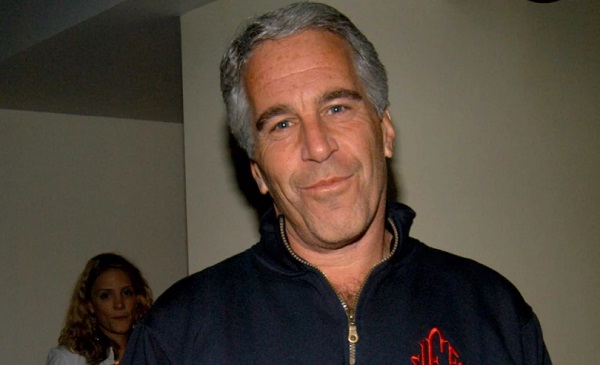Crime
While Illegal Aliens Kill and Rape, Bogus Crime ‘Studies’ Ideology Still Blunt Solutions

From ToddBensman.com
By Todd Bensman
Time for border enforcement hawks to disengage with this intellectually fraudulent sham debate and find this new approach
Advocates of a borderless United States – those who will do or say anything to unleash and maintain a torrent of unimpeded illegal mass border migration – demand that Americans deny an especially resonate outcome: illegal border crossers who murder, kill with drunk driving, rape, rob and beat their hosts.
In their arguments for unmitigated releases into the country of illegal border-crossing strangers, libertarian and progressive liberal pro-illegal immigration, anti-border enforcement activists always point to “studies” that compare illegal alien criminality to U.S. citizen criminality and then conclude that Americans commit as much or more than the illegal immigrants.
Media writers and pundits on the open-borders side parrot the “studies” to deflect detention and deportation proposals that would reduce illegal alien crime on grounds that the main danger to address are U.S. citizen criminals and, while you’re at that, let the border flows continue unimpeded since that population is less worrisome.
“No, Illegal Migrants Aren’t Fueling a Crime Wave,” reads the June 26 headline of a Bloomberg column by Justin Fox in a typical argument against illegal immigration enforcement.
“Migrant Crime Wave Not Supported by Data, Despite High-Profile Cases,” the headline of a February 15 New York Times report states in another one undermining recent demands for border enforcement.
“Ironically, studies indicate that immigrants commit less crime than U.S.-born individuals, and advocates have been pushing for less detention for years,” wrote Michael Lukens, Executive Director at the Capital Area Immigrants’ Rights Coalition, in a February 20 letter to the editor in The Washington Post. “Instead of alarmist tactics, ICE [U.S. Immigration and Customs Enforcement] should be looking at the devastating impacts of detention and releasing immigrants because it is the right thing to do.”
As complicit in this redirection are Republican border hawks and many on the right who abhor unimpeded illegal border immigration because they frequently engage the citizens-versus-illegal-aliens comparison, ever trying to challenge, counter, and undermine the crime comparison studies.
But what opponents of unmitigated mass migration must finally be made to realize, especially now that illegal alien crime is figuring largely for the November 5 presidential election, is that the door their adversaries opened for them leads up a fake stairwell.
The citizen-illegal alien comparison is invalid at the jump and, because it is once again often cited, a different approach is necessary.
An invalid apples-to-rocks comparison
The notion that policy thinkers and media pundits must compare the measured crime rates of citizens and illegal aliens – it’s unclear who initially devised it – has no foundation in academic science because the two compared groups are not similar enough.
Here is why: Illegal immigrants – and not ever American citizens and legal residents – are uniquely subject to an elaborate, expansive, and lawful government deportation and detention apparatus that Congress built to block and remove them from the country, in some part, so that they are not present to commit crimes. The same apparatus, of course, cannot touch American citizens who will commit crimes.
To restate the seemingly obvious, illegal aliens blocked at the border or who are quickly removed from the country cannot inflict any harm on American inhabitants because they are not present. That means every single crime committed by an illegally present immigrant should never have happened, was avoidable, preventable, and unnecessary whereas the Department of Homeland Security detention and removal machine cannot prevent a single American citizen crime. The United States, unfortunately, has no such choice but to contend with its criminal citizens before, during and after every crime they commit.
What this means is that all crimes committed by illegal aliens amount to a 100-percent net-gain burden on American society and its criminal justice system that was always largely preventable and unnecessary.
These differences between the two groups amount to an insurmountable Grand Canyon for purposes of comparison, apples-to-rocks, thus invalid for any academic study at the jump.
The libertarian and progressive liberals who created and purveyed the citizen-versus-illegal immigrant crime rate comparison debate should be called out for their campaign of misdirection or, if you will “gas-lighting.”
The misdirection campaign has always neutralized deserved political backlash against the highly resonate problem of 100 percent unnecessary extra crime that illegal aliens commit in the United States and stunted political momentum for policy remedies that would reduce both. By design, the mass illegal immigration and its associated 100 percent extra crime victimization continue while those who either favor or disfavor illegal immigration fruitlessly wage battles over a totally invalid proposition.
A different approach is long overdue.
The comparison stands discredited anyway but…
Border enforcement hawks have done much to discredit the studies that conclude American citizens commit more crime than illegal aliens. For instance, the Center for Immigration Studies has found that the activist-academics who favor unimpeded illegal immigration have misused data to undercount criminal alien crime. (See Misuse of Texas Data Understates Illegal Immigrant Crime and Continued Misuse of Texas Crime Data)
But as this 2024 presidential campaign period shows, efforts to engage the comparison debate have done little to suppress its continued impact of nullifying momentum for policy change. Mass media outlets still default to the original ruse at a time when a new approach to this discussion is most needed at this key time in the American political cycle, presenting an opportunity for the polity to rise up on good information and demand a halt to the mass border incursions that fuel 100-percent unnecessary net increases illegal alien crime.
Even though they have done a laudable job at discrediting the original studies, border enforcement advocates should disengage from further such distracting attempts and call out the comparison studies as the mendacious intellectual sham they are, on grounds that the two groups are too different to be compared. They must parry every citation of the studies and re-direct to the correct policy discussion, which is the extent to which current American leadership uses existing border enforcement law to block, detain, and deport. They must argue that all illegal alien crime is a 100 percent net addition to America’s crime problem, no matter what the rates per alien are, and that American citizen crime rates are irrelevant to the discussion of a solution to that.
They must only ever argue that blocking, detaining and deporting illegal aliens are the main levers that enable or prevent illegal alien crime in the United States. Most Americans will instinctively understand that this objective truth is on their side.
No one on either side of this policy issue should ever again engage in this immoral sham, but border enforcement hawks should parry and thrust elsewhere.
Graves that need never have been dug
Having said all of this, the comparison “studies” ruse was useful in one important regard; it surfaced rare data that establishes a rare and important measure of this preventable illegal immigrant crime. The data used in them comes from the only U.S. state that has tracked its unnecessary, all-net-gain illegal immigrant crime for years: Texas.
Border enforcement advocates should use this rare data set, not to compare the incomparable but, rather, to emphasize that it was entirely a net total – preventable – addition to overall U.S. crime. The Texas data should be used to emphasize a need for the United States to protect its citizens by exercising existing deportation and detention requirements embodied in the Immigration and Naturalization Act.
America may never know the extent to which alien crime that will result from the three-plus years of the Biden border crisis, which has ushered into the country at least seven million strangers as of this writing. Most local, state and federal agencies will not log immigration status of criminals.
But the Texas Department of Public Safety tracks the immigration status of suspects who are booked into local jails through a program that submits fingerprints to the FBI for criminal history and warrant checks, and to DHS. The agencies return immigration status information on those whose fingerprints were already on file (which is not all of them).
From the resulting Texas statistics, we catch a sound partial glimpse at the vaster sea of nationwide blood and carnage that was up to 100 percent preventable and unnecessary, of murder, rape, child abuse, burglary, felony theft, drug trafficking, alien smuggling and drunken driving manslaughter.
Between June 1, 2011 and June 30, 2024, these 437,000 criminal aliens (308,000 classified as illegal) were charged with more than 533,000 unnecessary extra criminal offenses that should never have happened.
Those included 997 homicide charges (resulting in 498 convictions as of June 2024), 1,245 kidnapping charges (resulting in 354 convictions), 6,744 sexual assault charges (resulting in 3,537 convictions), 7,763 sexual offense charges (resulting in 3,537 sexual offense convictions), and 6,560 weapons charges (resulting in 2,138 weapons convictions). Texas includes another category called “All Other Offenses,” which tallies 298,912 (and 103,265 convictions).
The Texas data reveals hundreds of dead people who should be alive, thousands of sexual assault and sexual offense victims who should never have suffered the trauma, and tens of thousands of assault charges involving victims who would not have been hurt.
The Texas data shows that criminal aliens took up police time and clogged up the American justice system that could have been more dedicated to American criminals. Thousands of drugs, burglary, robbery and weapons charges need not have jammed the Texas criminal justice systems at taxpayer cost.
In all, more than 32,000 people identified by DHS as living in the country illegally were imprisoned in Texas.
But the number of criminal illegal aliens appears to be a highly undercounted one even when a state like Texas is working hard at the tally. We know this because the Texas program found that another 10,748 illegal aliens since 2011, whose immigration status hadn’t been federally determined at the time of their arrests, were only later determined to be illegally present when they were sent to Texas state prisons. There must be far more.
Among them were prisoners serving time for 134 more unnecessary, preventable homicides.
The graves of all their dozens of dead victims are real even as nary any of them have drawn national media attention like a mere few have lately.
The bamboozlers bear responsibility for tragedies that deportation would have prevented. Far too often, the preventable violence is exceptionally brutal, scenes from the most extreme horror movies in volumes far too numerous to catalogue here.
The huge scale of seven or ten million foreign national strangers allowed to enter the United States in three years means the size of the criminal class among them must be historically large as well. All their crime will be 100 percent extra on top of U.S. citizen crime and potentially reducible by up to 100 percent in with the exercise of lawful detention and deportation.
Far fewer bad things will happen if Americans finally slam closed the wrong door with its fake stairwell.
Crime
Eyebrows Raise as Karoline Leavitt Answers Tough Questions About Epstein

Peter Doocy asked directly, “What happened to the Epstein client list that the Attorney General said she had on her desk?” Here’s how Leavitt tried to explain it.
The Epstein client list was supposed to be SITTING on Pam Bondi’s desk for review.
But months later, the DOJ says no such list even exists.
Karoline Leavitt was just asked why there was such a reversal in so little time.
Her responses today are raising eyebrows.
On February 21st, Pam Bondi told the world the Epstein client list was “sitting on [her] desk right now to review,” explaining it was part of a directive ordered by President Trump.
Shortly afterward, she and Kash Patel pledged to end the Epstein cover-up, promising to fully disclose the Epstein files to the public, hold accountable any government officials who withheld key evidence, and investigate why critical documents had been hidden in the first place.
But ever since late February, it seems the cover-up wasn’t exposed but buried even deeper by those who promised transparency.
First, they handed out the so-called “Epstein files” to influencers like golden Willy Wanka tickets, only for everyone to discover that almost all of the contents inside were already public and contained no new revelations.

Fast-forward to May, and suddenly Kash Patel and Dan Bongino are declaring firmly that Epstein killed himself.
“I’ve seen the whole file. He killed himself,” Bongino stated bluntly to Fox News’s Maria Bartiromo.
Today, the Trump-appointed DOJ and FBI released a new report that’s turning heads and raising plenty of questions.
They concluded that Epstein had no clients, didn’t blackmail anyone, and definitely killed himself.
FBI Concludes Epstein Had No Clients, Didn’t Blackmail Anyone, and Definitely Killed Himself
This article originally appeared on Infowars and was republished with permission.
They also released surveillance footage and claimed it showed no one entered Epstein’s cell area, supporting the suicide ruling.
But people aren’t convinced. Some allege the video cuts off, with a minute of footage missing between 11:59 PM and midnight.
Monday, White House Press Secretary Karoline Leavitt responded to questions about the Epstein client list in light of these new DOJ and FBI statements.
A reporter asked, “Karoline, the DOJ and FBI have now concluded there was no Jeffrey Epstein client list. What do you tell MAGA supporters who say they want anyone involved in Epstein’s alleged crimes held accountable?”
Leavitt replied, “This administration wants anyone who has ever committed a crime to be accountable, and I would argue this administration has done more to lock up bad guys than certainly the previous administration.”
She continued, “The Trump administration is committed to truth and transparency. That’s why the Attorney General and the FBI Director pledged, at the president’s direction, to do an exhaustive review of all the files related to Jeffrey Epstein’s crimes and his death. They put out a memo in conclusion of that review.”
“There was material they did not release because frankly it was incredibly graphic and contained child pornography, which is not something that is appropriate for public consumption,” she added.
“But they committed to an exhaustive investigation. That’s what they did and they provided the results of that.”
“That’s transparency,” Leavitt said.
Leavitt was also pressed about Attorney General Pam Bondi’s comments in February when she claimed she had the Epstein list “on [her] desk.”
Peter Doocy asked, “Okay, so the FBI looks at the circumstances surrounding the death of Jeffrey Epstein. According to the report, this systematic review revealed no incriminating client list. So what happened to the Epstein client list that the Attorney General said she had on her desk?”
Leavitt responded, “I think if you go back and look at what the Attorney General said in that interview, which was on your network, on Fox News—”
Doocy pushed back, “I have the quote. John Roberts said: ‘DOJ may release the list of Jeffrey Epstein’s clients, will that really happen?’ And she said, ‘It’s sitting on my desk right now to review.’”
Leavitt explained, “Yes. She was saying the entirety of all of the paperwork, all of the paper in relation to Jeffrey Epstein’s crimes, that’s what the Attorney General was referring to. And I will let her speak for that.”
“But when it comes to the FBI and the Department of Justice, they are more than committed to ensuring that bad people are put behind bars.”
So, after months of patiently waiting, the American people get a nothing burger that simply repeats the same old claims we heard under Bill Barr.
Even worse, it’s purported that this is what “transparency” and “accountability” look like.
The story went from saying the Epstein client list was “on my desk” to “actually, there is no client list.”
And the newly released video footage raises questions and, in the age of AI, proves nothing.
If there’s really nothing to hide, why does it still feel like they’re hiding everything?
And most importantly—who’s still being protected?

Thanks for reading to the end. I hope you found this timeline of events and recap helpful.
Subscribe to The Vigilant Fox
Crime
News Jeffrey Epstein did not have a client list, nor did he kill himself, Trump DOJ, FBI claim

From LifeSiteNews
By Robert Jones
Elon Musk, who previously said Trump was on the list, was one of many X users to express skepticism of the report.
The U.S. Department of Justice and the Federal Bureau of Investigations say they have found no evidence that Jeffrey Epstein blackmailed powerful figures, kept a “client list,” or was murdered, per a memo obtained by Axios.
The document states that Epstein died by suicide and confirms that no further charges will be filed — effectively signaling the end of an active investigation, though no formal closure has been announced.
The findings were disclosed in a two-page statement, marking the Trump administration’s first definitive rejection of years of speculation surrounding Epstein’s 2019 death in federal custody.
READ: Jeffrey Epstein accuser Virginia Giuffre reportedly dies by suicide
Investigators say enhanced surveillance footage from the night Epstein died in a New York prison shows no one entered the area near his cell from the time he was locked in until his body was discovered.
“The FBI enhanced the relevant footage by increasing its contrast, balancing the color, and improving its sharpness,” the memo states.
Axios also claimed that the Trump administration would be releasing videos proving its findings, though the links provided in the Axios story to the videos were inactive.
Epstein’s former associate Ghislaine Maxwell remains incarcerated, serving a 20-year sentence for trafficking underage girls.
Despite previously being outspoken skeptics of the official government narrative, current FBI Director Kash Patel and Deputy Director Dan Bongino now back the findings.
“He killed himself,” Bongino said during a May appearance on Fox News along with Patel. “I’ve seen the whole file.”
Despite the release of the footage, questions remain about the veracity of the findings.
A February release of Epstein-related files by the DOJ was criticized by members of Congress, including Rep. Anna Paulina Luna (R-Fla.), for failing to disclose new information.
“THIS IS NOT WHAT WE OR THE AMERICAN PEOPLE ASKED FOR,” she exclaimed in an X post.
I nor the task force were given or reviewed the Epstein documents being released today… A NY Post story just revealed that the documents will simply be Epstein's phonebook.
THIS IS NOT WHAT WE OR THE AMERICAN PEOPLE ASKED FOR and a complete disappointment.
GET US THE…
— Rep. Anna Paulina Luna (@RepLuna) February 27, 2025
The latest memo reiterates that further disclosures would not be “appropriate or warranted,” citing concerns about revealing details of abuse and risking the exposure of otherwise innocent individuals.
READ: FBI releases incomplete set of files on sex trafficker Jeffrey Epstein, triggering public outcry
Adding fuel to the controversy, former DOGE adviser Elon Musk recently accused Trump of being named in Epstein’s files. Musk later retracted the claim and deleted his X posts about the topic, but shared his frustration with the latest developments earlier today.
— Elon Musk (@elonmusk) July 7, 2025
The DOJ’s announcement signals that the government considers the matter closed, despite continued public interest and bipartisan demands for greater transparency.
-

 Alberta2 days ago
Alberta2 days agoAlberta Provincial Police – New chief of Independent Agency Police Service
-

 Business2 days ago
Business2 days agoWhy it’s time to repeal the oil tanker ban on B.C.’s north coast
-

 Energy2 days ago
Energy2 days agoIf Canada Wants to be the World’s Energy Partner, We Need to Act Like It
-

 International2 days ago
International2 days agoCBS settles with Trump over doctored 60 Minutes Harris interview
-

 Alberta2 days ago
Alberta2 days agoPierre Poilievre – Per Capita, Hardisty, Alberta Is the Most Important Little Town In Canada
-

 Aristotle Foundation2 days ago
Aristotle Foundation2 days agoHow Vimy Ridge Shaped Canada
-

 Alberta1 day ago
Alberta1 day agoAlberta uncorks new rules for liquor and cannabis
-

 Canadian Energy Centre1 day ago
Canadian Energy Centre1 day agoAlberta oil sands legacy tailings down 40 per cent since 2015








